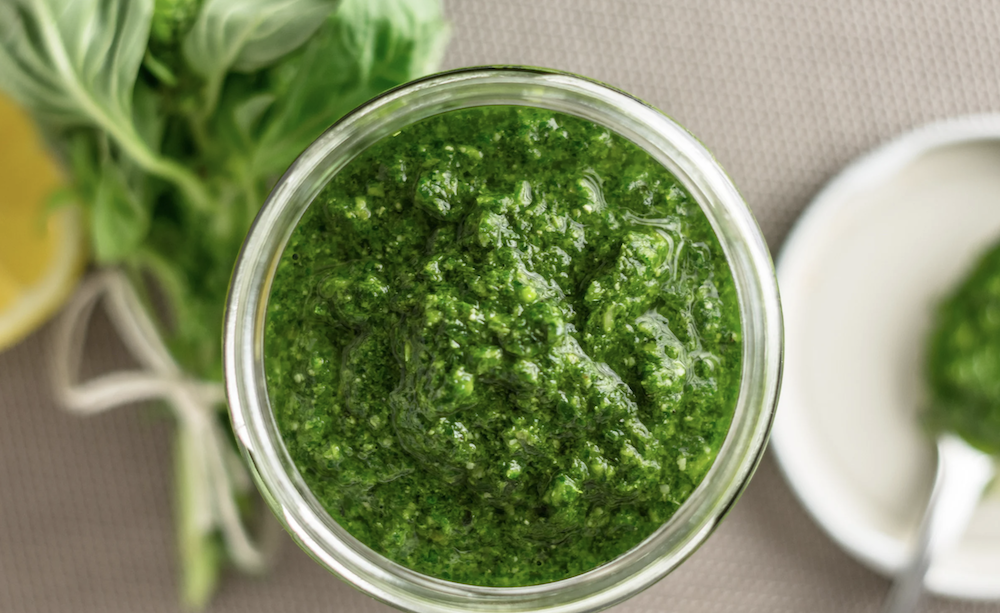 🖨️ Print post
🖨️ Print post
This recipe is from Sally Fallon Morell’s Nourishing Traditions p. 144. Many cultures have valued basil as a sacred plant. In India, a species of basil called tulasi is an object of veneration, cultivated in temples and garden shrines. Tulasi is said to kill mosquitoes and demons, to cure disease and cleanse the air. In ancient Greece and Persia, sweet basil was associated with mourning and planted on graves. In ancient Rome, basil was associated with fertility, love and sexual stimulation. In China, basil traditionally pro- vided a base for perfume and was planted in gardens to mask the bad odor of fertilizer.
Today the delicious taste and aroma of basil is the signature of Mediterranean cooking. The French call it l’herbe royale (the royal plant) for good reason. Tests have shown that the smell of basil has a salutary effect on people’s outlook and disposition. It is valued for its ability to relieve intestinal gas and inhibit dysentery. The leaves may be brewed into a tea for these complaints. A relative of mint, basil is easy to grow. It goes beautifully with tomato, fish and meat dishes. This recipe makes 1 cup:
Ingredients
- 2 cups packed fresh basil leaves, washed and dried
- 2-4 cloves garlic, peeled
- ½ teaspoon sea salt
- ¼ cup crispy pine nuts [Note you’ll need to scroll down the crispy nut recipe page for pine nuts. Also, pine nuts are high in oxalates and pecans are a low-oxalate alternative.]
- ¼ cup good quality grated Parmesan cheese – [preferably raw]
- ¼ -½ cup extra virgin olive oil
Instructions
- Place basil leaves in food processor. Pulse until well chopped.
- Add garlic, salt, pine nuts [or alternative] and cheese and blend well.
- Using attachment for adding liquids drop by drop, and with motor running, add olive oil to form a thick paste.
- Pesto will keep several days, well sealed, in refrigerator; or it may be frozen.


Leave a Reply